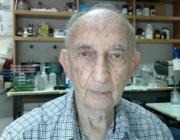Citation:
I. Ginsburg, Koren, E. , Trahtemberg, U. , and Van Heerden, V. . 2017. “Is Histone A Solitary Vile Sepsis-Inducing Agent Or Just &Quot;A Member Of The Gang&Quot;?”. Journal Of Infectious Diseases And Therapy, 5. https://www.omicsonline.org/open-access/is-histone-a-solitary-vile-sepsisinducing-agent-or-just-a-member-of-thegang-2332-0877-1000329.php?aid=91999.

